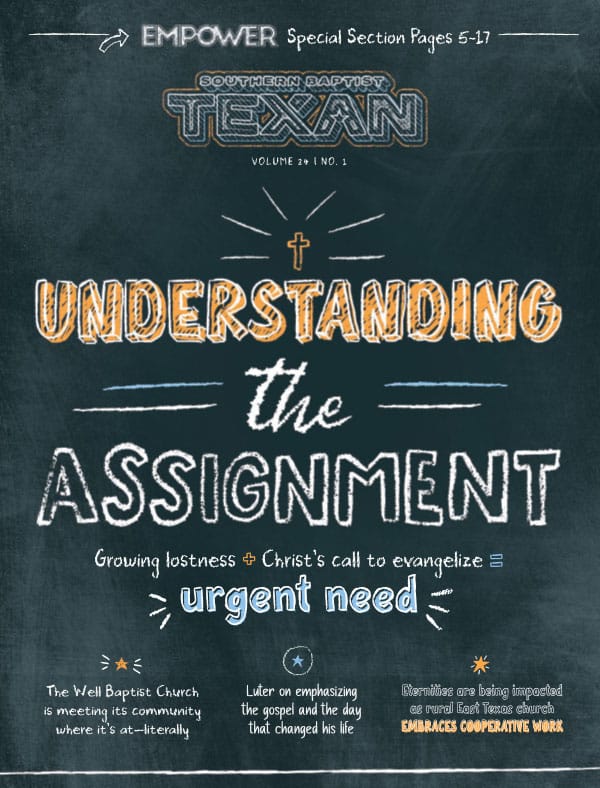When it comes to counting church plants, one person’s dozen may be a “baker’s dozen” to the next guy counting.
Although most evangelistic and church planting strategies lead to new converts, not all can rightly be called churches, said Terry Coy, SBTC missions director.
Unfortunately for those who track such things at the North American Mission Board (NAMB)—Southern Baptists’ domestic missions agency in suburban Atlanta—the 43 Baptist state conventions it cooperates with use varied criteria for determining what a church plant is.
“Nationally, it’s been apple to oranges,” Coy said. “What we’ve discovered is the need for a more standardized definition of a church.”
NAMB’s new president, Kevin Ezell, has said NAMB will implement such a standard.
At the SBTC, a church plant is regarded as a new work planted with some SBTC funding and accountability—in partnership with local churches and associations—that practices the New Testament functions of a church. A church plant practices the ordinances of baptism and the Lord’s Supper, has a pastor, and is intentional in its formation and identity as a local church.
The convention doesn’t take credit for churches planted without the church planting team’s involvement or new congregations formed from church splits. Organic strategies that involve Bible studies, multi-housing outreaches, or other similar ministries are also not counted as church plants until, and only if, they grow into intentional congregations.
“That is, there are many ministries that might be church planting strategies, but they do not always nor necessarily lead to a new church. All should be encouraged and celebrated, but we’re calling it a church after the fact, not before,” Coy explained.
Last year, the SBTC helped plant 25 new churches, with about 40 expected this year.
Ezell, speaking to state Baptist paper editors in February, said that in his assessment of NAMB’s work with the various state conventions, a plethora of accounting formulas led to “a lot of smoke and mirrors” to make numbers look better than they were.
For example, Ezell said, “One time I got five different answers to the same question because I asked five different people on purpose. … It’s very hard to solve a problem when you don’t have the right components to add or subtract.” He wants uniform counting standards that don’t tempt people “with skin in the game” to pad numbers.
In annual reports to NAMB, some state conventions counted as new church plants those that had “been alive maybe 30 to 40 years but on a church plant list.” Others have included Bible studies held at campgrounds, Ezell said, or recounted the same newly planted churches two or three years consecutively.
“Southern Baptists, when they hear that number, assume those are new church plants,” Ezell said.
Coy said the SBTC would rather undercount the number of church starts than overcount.
Organic strategies that involve multi-housing and people group strategists may be supported with church planting funds and are considered planting strategies but not considered church plants on the front end.
“Let’s plant the seeds, let’s start it, and let’s see what it grows into,” Coy said. “If and when it has the New Testament functions of a church, then we’ll call it a church.”
Some of the catalytic approaches to church planting “will become New Testament churches; others will become feeder ministries for existing churches,” he said.
“I am willing to call all of these methods church planting strategies and they all need to be celebrated, but they are not necessarily church plants.”














